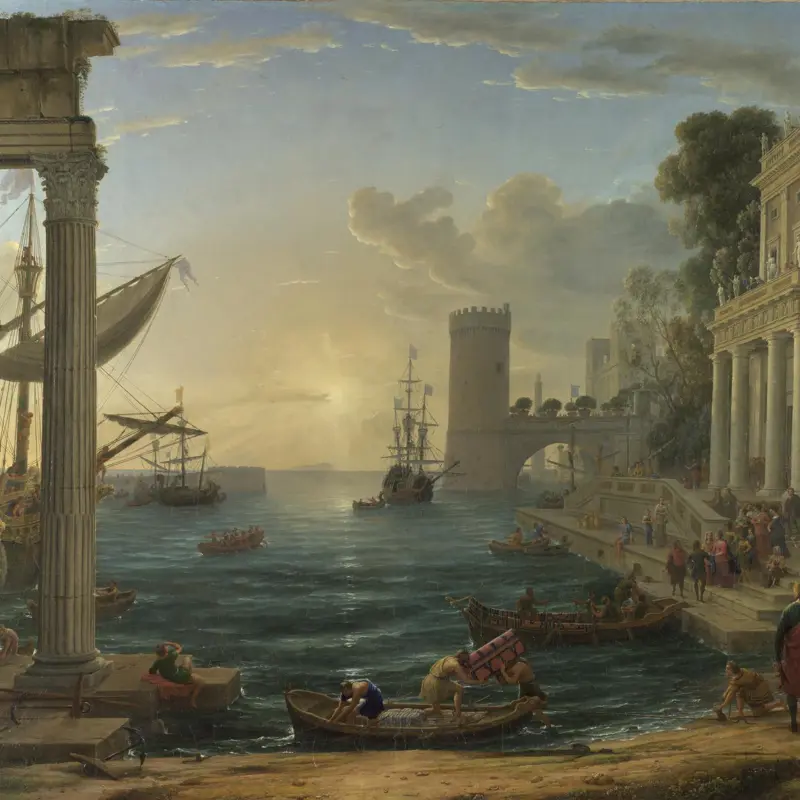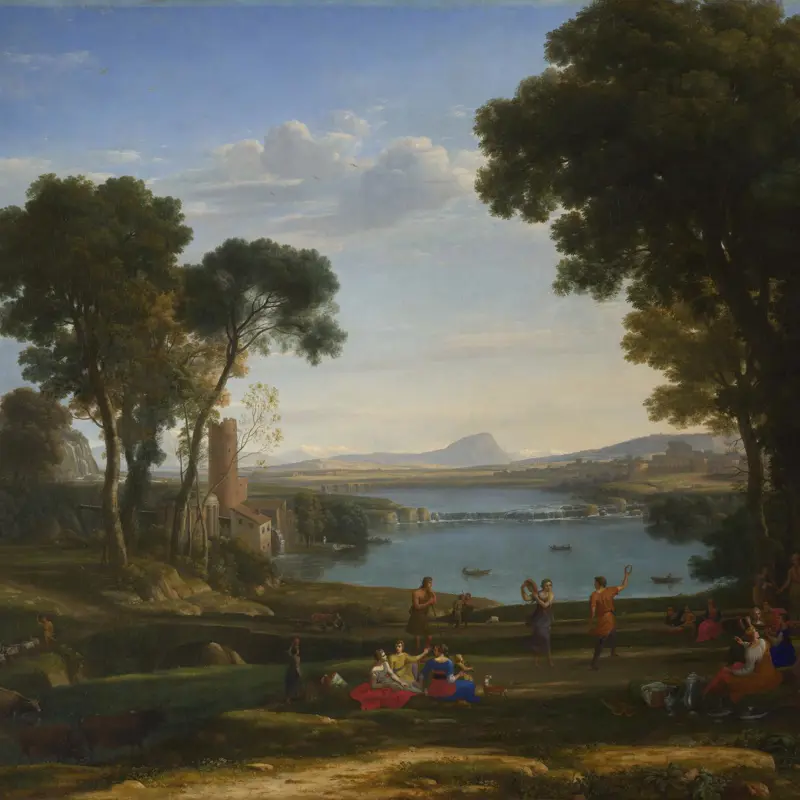British painter Joseph Mallord William Turner (1775‒1851) enjoyed a highly successful artistic career. When he died he bequeathed to the nation a large number of his paintings, including 'Dido building Carthage' and 'Sun Rising through Vapour'. These two paintings came with the condition that they should be displayed alongside Claude’s 'Landscape with the Marriage of Isaac and Rebecca' and 'Seaport with the Embarkation of the Queen of Sheba' (view paintings).
By linking these paintings together Turner wanted to ensure that his association with the earlier Old Master, Claude, would endure beyond his lifetime. After some of Turner’s cousins contested his will, a settlement was reached which, in the end, resulted in a much larger gift of works of art to the nation.
The entire bequest – most of which is now housed in the Clore Gallery at Tate Britain – comprises nearly 300 oil paintings and around 30,000 sketches and watercolours, including 300 sketchbooks.
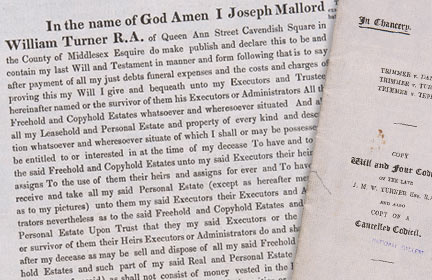
Turner's Will
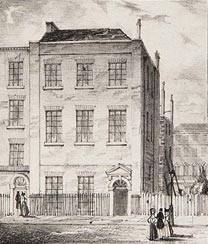
Turner drew up his first will in 1829, at the age of 54, shortly after the death of his father. At this time, the National Gallery’s collection was displayed in a townhouse in Pall Mall.
In this location the arrangement of the paintings was not so concerned with chronology, like it is today. Turner’s stipulation that two of his paintings should hang with two works by Claude was made within the context of a Gallery in which Claude was already juxtaposed with Titian and Sebastiano del Piombo.
In 1848 Turner amended his will to include his collection of all his finished pictures. He wanted these pictures to be housed together in a room at the Gallery, which had by this time moved to its current building on Trafalgar Square.
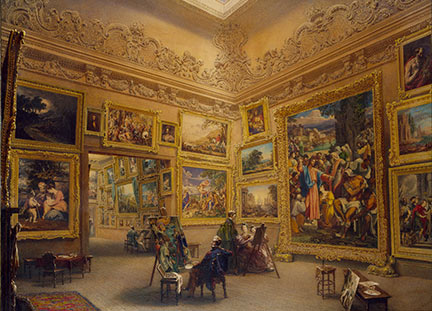
The court case
After Turner died, aged 76, in December 1851, a number of his cousins contested his will and the bequest to the nation was delayed.
In late 1852, Philip Hardwick, one of Turner’s executors, urged the National Gallery’s Trustees to:
‘immediately make an official application…for the two pictures bequeathed to them under his will’
Consequently, Dido building Carthage and Sun Rising through Vapour were moved to Trafalgar Square.
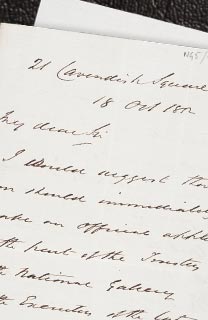
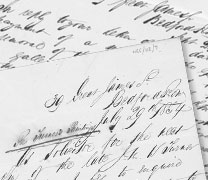
The challenge to Turner’s will was coordinated by Jabez Tepper, the son of one of the artist’s cousins. He argued that Turner’s philanthropic intention, which was to allocate most of his estate to the establishment of a charitable institution for impoverished artists, was illegal.
In 1856 the case was finally resolved. A court decree awarded not just the finished pictures that had been previously mentioned in Turner’s will, but all his artistic works to the nation, and the remainder of the estate to his relatives
The paintings on display
In the mid-1850s Turner’s two pictures were still being displayed next to Claude’s (view paintings) in Trafalgar Square.
However because space was at such a premium in the Trafalgar Square building the rest of the Turner bequest was initially exhibited with the National Gallery’s British pictures at Marlborough House in Pall Mall.
When that residence was assigned to the Prince of Wales in 1859, Turner’s paintings moved even further away, to a gallery adjoining the South Kensington Museum, which is now the Victoria and Albert Museum.
It was not until 1861 that all the finished pictures were finally placed in Trafalgar Square following a House of Lords enquiry that upheld Turner’s original wish that his paintings be housed together at the National Gallery.
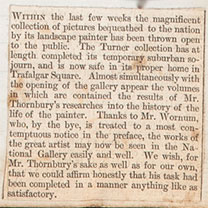
As a result of this decision they were exhibited as a separate ‘Turner Collection’ while the two Turners and two Claudes were displayed within the rooms dedicated to French paintings. The unfinished paintings, and the sketches and drawings, remained at South Kensington.
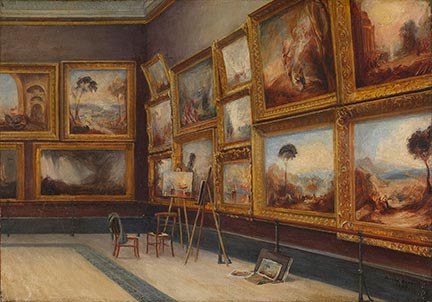
Trafalgar Square to Tate
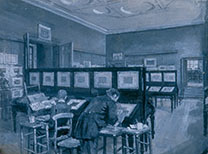
The opening of an extension to the Trafalgar Square building in 1876, known as the Barry Rooms (Rooms 32–38 and 40), enabled the Gallery to reunite the entire bequest in one place.
The unfinished paintings, along with the sketches and drawings, were returned to the National Gallery from South Kensington, joining the finished paintings and 'Dido building Carthage' and 'Sun Rising through Vapour', in Trafalgar Square.
However, as the National Gallery’s collection continued to grow, space remained a concern.
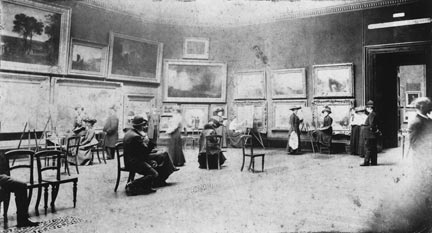
In 1910 it was decided to transfer the bulk of the Turner bequest to the newly opened Tate Gallery, which had been established in 1897 as an annexe of the National Gallery.
After the transfer a number of Turners remained on display at Trafalgar Square, either with the British pictures or in the Gallery’s entrance vestibule.
In the period between the world wars the two Turners and the two Claudes were no longer exhibited with the French paintings and the four works spent much of this period also in the entrance vestibule. They would remain there until the outbreak of the Second World War when the entire collection was evacuated from London.
The final settlement
After the Second World War, the Gallery did not resume the display of Turner’s two paintings next to Claude's (view paintings).
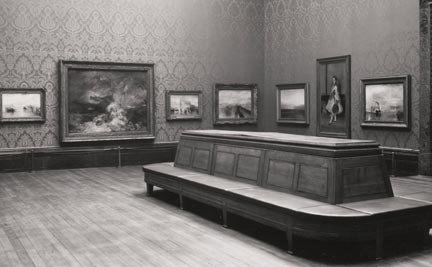
This was partly due to limitations on space in a bomb damaged Gallery, but it was also due to a reconsideration of the agreement that had been made in 1856.
The Gallery claimed that:
‘the moral issue raised by the terms of Turner’s will is no longer in question’ [given that Turner’s reputation as Claude’s equal was now acknowledged, and] ‘it would scarcely be necessary for that reason alone to continue the arrangement’.
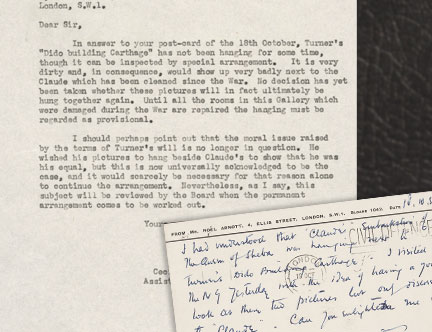
In 1968 the National Gallery and Tate (which had formally separated from the Gallery in 1955) agreed that the collection of British paintings in each gallery should be more clearly defined.
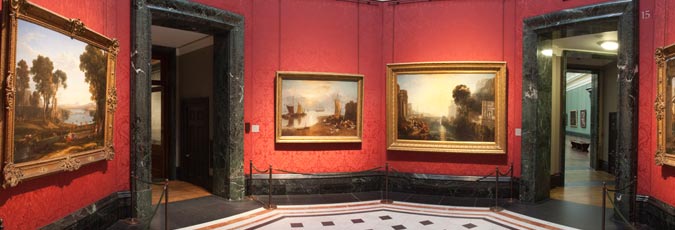
Seven paintings were selected for the National Gallery to represent the full range and influence of Turner’s work. At the same time, press interest prompted the Gallery to reconsider their display of the Turners and Claudes.
The paintings were reunited and remain alongside one another today.
Find out more about Turner and view his paintings in the collection


